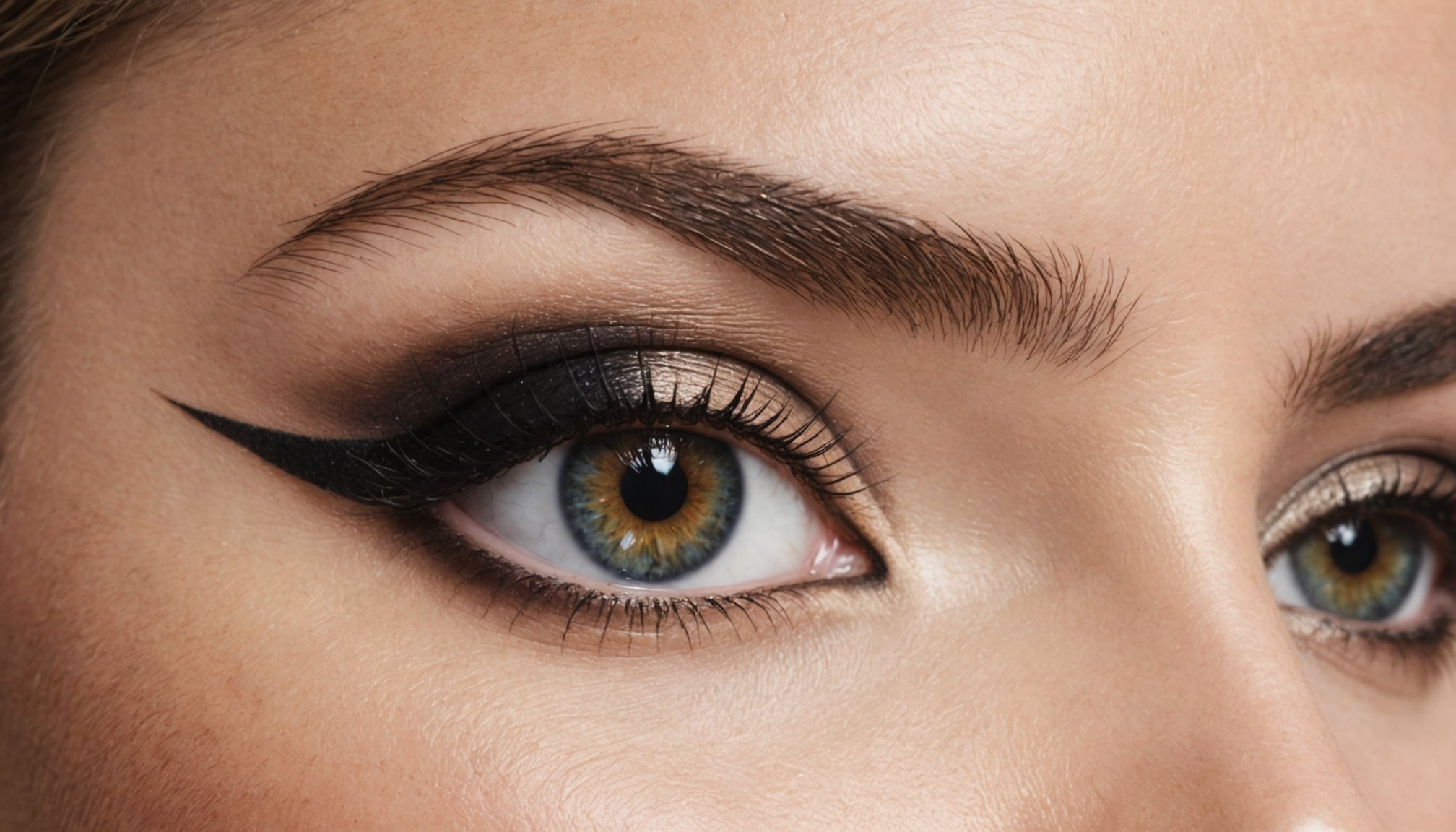Dark circles can age your appearance and mask your natural vitality. Understanding their causes helps tailor effective treatments—from lifestyle changes and topical products to advanced procedures like lasers and fillers. Expert advice guides you through proven solutions, so you can refresh your look confidently and prevent recurrence. Explore practical strategies that address both symptoms and root causes for lasting results.
Understanding Dark Circles: Causes and Characteristics
Under-Eye Treatment for Dark Circles often begins with a clear understanding of their origins. The primary causes of dark circles include aging, genetics, sun exposure, and lifestyle habits. As skin ages, it naturally becomes thinner and less elastic, making blood vessels beneath the surface more visible. This translucency often results in the characteristic bluish or purple hues associated with dark circles.
Have you seen this : Romantic winter's barns : your ideal wedding venue in kent
Genetics also play a significant role, especially in individuals with darker skin tones where pigmentation tends to be more pronounced. Sun exposure can exacerbate these discolorations by increasing melanin production in the sensitive under-eye area, further darkening the skin. Lifestyle factors such as inadequate sleep, dehydration, stress, excessive alcohol intake, and smoking compound these issues, leading to dull and tired-looking eyes.
Underlying mechanisms behind dark circles are diverse:
This might interest you : Discover the best ashtanga yoga classes in london
- Pigmentation: Increased melanin production causing hyperpigmentation.
- Vascular issues: Dilated blood vessels and pooling blood create a darker appearance.
- Skin thinning: Loss of collagen causes the skin to appear more transparent, revealing underlying blood vessels.
Dark circles significantly impact appearance, often perceived as a sign of fatigue or aging, even when the individual feels well.
Addressing these concerns involves a combination of remedies. Topical creams containing vitamin C, retinol, and ingredients like niacinamide can help lighten pigmentation and strengthen fragile skin. Preventive measures, including daily sun protection with SPF and sunglasses, are crucial. Lifestyle changes such as maintaining a regular sleep schedule, reducing stress, quitting smoking, and staying well-hydrated can reduce their severity over time.
When home remedies and lifestyle adjustments are insufficient, Under-Eye Treatment for Dark Circles options like laser therapy, fillers, chemical peels, and minimally invasive procedures offer effective solutions. Laser treatments, in particular, can target pigmentation and improve skin texture, while fillers restore volume lost through aging, diminishing hollowed areas and shadows.
Further details on treatment options can be found on the Harley Street Dermal page, where more information is available about suitable treatments and their costs. To explore precise options tailored to individual needs, scheduling a consultation with a specialist is recommended.
Assessment and Diagnosis of Under-Eye Discoloration
A thorough evaluation is the first step toward effective under-eye discoloration solutions. The initial precision, following the SQuAD method, is to determine whether the darkened area stems primarily from pigmentation, vascular visibility, or structural hollowness. This differentiation is central since remedies for tired eye appearance and the best creams for puffiness and darkness depend on correctly identifying the root cause.
Identifying Underlying Causes
Distinguishing the causes of eye shadowing beneath eyes is crucial. Pigmented dark circles often result from excess melanin, seen as brown or black tones, whereas vascular types—bluish or purple under the eyes—may signal visible blood vessels from thinning skin, dehydration, or allergy-related dark circles relief needs. Hollow types develop as skin loses elasticity and subcutaneous fat, typically with aging. Understanding the role of genetics in under-eye darkness and how lifestyle habits that aggravate dark circles (such as insufficient sleep or smoking) contribute is necessary for managing pigmentation around eyes.
Clinical Evaluation and When to Seek Medical Advice
A comprehensive clinical assessment by a professional ensures that uncommon causes, such as anemia or other systemic deficiencies, are not overlooked. For instance, persistent or one-sided discoloration, especially if accompanied by swelling or pain, could indicate a more serious underlying concern. In such cases, identifying serious skin conditions masquerading as discoloration becomes essential. Early consultation also supports safer choices for cosmetic procedures for under-eye correction and helps prevent complications from unsuitable remedies for tired eye appearance, especially in sensitive or allergic individuals.
Tailoring Treatment to Circle Type
Choosing the right solution—be it natural remedies to brighten under-eye area, professional treatments for eye bags, or topical applications—relies on matching therapy to diagnosis. For pigmented cases, creams targeting melanin, like vitamin C serums for skin lightening and best creams for puffiness and darkness, are preferred. Vascular cases might benefit from cold compress for eye refreshment or caffeine-containing products, while volume restoration with hyaluronic acid for eye rejuvenation or collagen stimulation methods for eye area proves beneficial in hollow types. A professional’s input is key for combining treatments for best results and understanding the benefits of each choice.
Monitoring and Safe Practices
If you try at-home remedies for tired eye appearance or more intensive under-eye discoloration solutions, consistently reviewing progress is wise. Persistent failure to improve may require a renewed assessment—ensuring deficiencies, such as iron or vitamin K, or adverse reactions are not hindering progress. Recognizing allergic reactions to treatments is fundamental for safety. Benefits of patch testing new treatments and seeking advice from a dermatologist about effective eye serum ingredients and skincare routines focusing on delicate eye skin cannot be underestimated; this approach supports both efficacy and safety.
Lifestyle and Home Remedies for Dark Circles
Sleep Hygiene and Habits
Attaining at least seven hours of restful sleep is among the most effective under-eye discoloration solutions. Inadequate rest makes the skin lighter and accentuates the blood vessels and shadows below the eyes. Adopting consistent sleep habits and elevating your head with an extra pillow reduces fluid buildup, which can diminish puffiness and help remedy tired eye appearance. Proper sleep habits to minimize under-eye marks are especially important for those with a history of thinning skin or a genetic tendency toward eye shadowing beneath eyes.
Integrating lifestyle changes to reduce eye shadows—such as limiting screen time before bed—may further protect delicate under-eye skin and support overall eye health. For those experiencing allergy-related dark circles relief, minimizing allergens in the bedroom and keeping bedding clean is especially helpful.
Natural and Over-the-Counter Interventions
Immediate relief for tired eye appearance often starts with easy, non-invasive measures. Applying a cold compress—for example, chilled spoons, cold tea bags, or cucumber slices—can help refresh the eyes by shrinking blood vessels and soothing swelling. This approach not only provides hydration tips for under-eye skin, but also serves as a simple, accessible natural remedy to brighten the under-eye area.
A diet rich in antioxidants—found in berries, nuts, green leafy vegetables—and adequate hydration can enhance microcirculation and support the role of antioxidants in skin health. Avoidance of foods that cause dark circles and sufficient dietary supplements to improve skin tone, such as vitamin K or vitamin C, may also contribute to managing pigmentation around eyes.
Stress effects on eye appearance are well documented. Stress management, through mindfulness or regular gentle facial exercises targeting the eye area, offers benefit for both overall well-being and the skin’s appearance.
Among best creams for puffiness and darkness, over-the-counter options with caffeine, vitamin C, niacinamide, or peptides have shown to be effective. Caffeine effects on blood vessels near eyes can help reduce visible signs of tiredness, while vitamin C serums for skin lightening brighten and even out the tone. Niacinamide addresses pigmentation and strengthens the skin barrier, making it a favored ingredient in skincare routines focusing on delicate eye skin. Peptides support collagen stimulation methods for eye area, improving firmness and reducing the signs of aging around eyes and treatments.
Regular use of eye mask treatments for hydration, alongside carefully chosen non-pharmaceutical options for sensitive skin, can advance the results from these strategies. For optimal safety, always patch-test new products and follow advice from top dermatologist recommendations. Following safe product layering routines and gentle massage techniques for lymphatic drainage can further enhance the absorption and effects of home-based and over-the-counter interventions for under-eye correction.
Skincare and Topical Treatments for Under-Eye Discoloration
Active Ingredients and Products
The most effective under-eye discoloration solutions target both the structural and pigment-related causes of discoloration. Vitamin C serums for skin lightening stand out for managing pigmentation around eyes, thanks to their antioxidant power. Regular use can brighten the area, making them a leading choice among best creams for puffiness and darkness. Hyaluronic acid for eye rejuvenation addresses tired eye appearance by hydrating and plumping the delicate under-eye skin, reducing both puffiness and the look of fine lines caused by thinning skin. For collagen stimulation, retinol products targeting fine lines and darkness, along with peptide-rich formulas, help reinforce the under-eye area against age-related shadowing.
A strong skincare routine focusing on the delicate eye skin should emphasize specialty formulations—especially those containing vitamin C serums for skin lightening and hyaluronic acid for eye rejuvenation. Caffeine eye creams vs general creams often show superior performance, as caffeine helps reduce fluid accumulation and temporarily tightens the skin, enhancing remedies for tired eye appearance. Many top dermatologist recommendations also highlight the importance of anti-inflammatory ingredients and antioxidants to protect against lifestyle habits that aggravate dark circles.
Application Tips and Safety
Proper eye cream application tips play a significant role in achieving results without irritating this sensitive area. When using the best creams for puffiness and darkness, gently pat the product in with your ring finger, moving from the inner to the outer corner to stimulate microcirculation. For maximum benefit, layer eye serums and creams with hydration masks or eye mask treatments for hydration several times weekly.
Safety tips for eye area products start with the importance of patch testing new treatments—especially for those with a history of allergy-related dark circles relief needs. Recognizing allergic reactions to treatments early, such as redness, stinging, or swelling, can prevent further aggravation of under-eye discoloration. Choosing products based on skin type is key; opt for hypoallergenic or fragrance-free formulas if you are prone to sensitivities.
Patience and consistency in treatment application cannot be overstated. Results often require nightly application over several weeks. Additionally, always shield the under-eye area with SPF for delicate eye skin during daytime routines, as sun exposure is a main driver in causes of eye shadowing beneath eyes and exacerbates existing pigmentation. With these measures, under-eye discoloration solutions can become both safe and effective staples in your skincare regimen.
Medical and Cosmetic Procedures for Addressing Dark Circles
Non-Invasive Treatments
Professional treatments for eye bags often begin with non-invasive solutions that target both the appearance and the underlying causes of eye shadowing beneath eyes. Laser therapy, such as pulsed dye and diode lasers, focuses on laser therapy options for under-eye brightening by breaking down excess pigment and encouraging collagen stimulation methods for eye area firmness. These procedures also help manage pigmentation around eyes, lessening visible dark marks and strengthening the skin’s resilience.
Chemical peels containing mild alpha-hydroxy acids belong to effective cosmetic procedures for under-eye correction. They exfoliate the delicate under-eye skin, improving tone and reducing hyperpigmentation—a key cause of under-eye discoloration solutions. Skincare routines focusing on delicate eye skin may also include such peels, optimizing both brightness and texture.
Micro-needling and radiofrequency devices represent advanced techniques in non-invasive remedies for tired eye appearance. By creating micro-injuries, they promote natural collagen stimulation methods for eye area rejuvenation. This process thickens thinning skin, often aggravated by age or environmental factors, providing both hydration tips for under-eye skin and an improvement in skin elasticity.
Minimally Invasive and Surgical Options
When topical and non-invasive remedies are insufficient, minimally invasive and surgical cosmetic procedures for under-eye correction offer more pronounced improvement. Injectable hyaluronic acid for eye rejuvenation is a leading method. Fillers restore volume in the tear trough, reducing hollow shadows and achieving a natural smoothness. Hyaluronic acid’s ability to retain moisture supports hydration tips for under-eye skin, further minimizing fine lines and darkness.
Blepharoplasty, or eyelid surgery, is indicated for excess skin or stubborn under-eye bags. This procedure addresses the structural causes of eye shadowing beneath eyes, removing fat deposits and tightening tissues—key for severe or persistent puffiness unresponsive to other treatments.
Platelet-rich plasma (PRP) therapy harnesses the body’s own growth factors. Injected carefully under the eyes, PRP stimulates new collagen and enhances microcirculation, another integral aspect of collagen stimulation methods for eye area improvement. This not only addresses discoloration but also enhances skin quality long term.
Patients interested in these therapeutic options should consult professionals for personalized under-eye discoloration solutions, considering factors like genetics, signs of aging around eyes and treatments, and suitability for their skin type. Combining professional treatments for eye bags with a tailored skincare routine and lifestyle changes to reduce eye shadows encourages enduring results and supports delicate skin health.
Preventing and Managing Contributing Factors
Daily Sun Protection and UV Safety
Consistent use of sunscreen around the eyes is one of the most effective under-eye discoloration solutions. UV rays accelerate skin thinning and pigmentation, amplifying the causes of eye shadowing beneath eyes. Dermatologists strongly advocate for broad-spectrum sunscreen and UV-protective eyewear, which directly curtail sun-induced hyperpigmentation and crepey skin. These habits are essential in any skincare routines focusing on delicate eye skin, minimizing further dermal discoloration and supporting long-term results from remedies for tired eye appearance.
Lifestyle Adjustments for Lasting Results
Healthy daily habits offer significant remedies for tired eye appearance and bolster natural remedies to brighten under-eye area. Smoking cessation benefits for skin clarity are especially impactful—quitting markedly slows eye area aging and helps prevent new discoloration. Likewise, moderating alcohol intake and managing stress reduces fluid retention and puffiness, critical elements in the best creams for puffiness and darkness. Experts also point to lifestyle changes to reduce eye shadows: consistent hydration, quality sleep routines, and stress management apply to all ages and skin types.
Sleep, Hydration, and Eye Strain Reduction
Sufficient hydration, alongside at least seven hours of sleep, markedly improves under-eye skin tone. Both sleep habits to minimize under-eye marks and practical hydration tips for under-eye skin help skin appear more supple and bright. Reducing screen time and following eye strain reduction techniques for better skin also lessens puffiness and prevents new pigmentation issues. These approachable techniques, paired with consistent skincare routines focusing on delicate eye skin, act cumulatively as effective under-eye discoloration solutions for many.
Safe Skincare, Protective Measures, and Hygiene
Adding best creams for puffiness and darkness—formulated for delicate skin—and eye mask treatments for hydration are recommended by top dermatologist recommendations. Key safety tips for eye area products include patch testing to avoid allergy-related dark circles relief issues. Maintaining a routine with makeup removal best practices and using gentle products addresses both existing concerns and hinders future damage. For ongoing support, regular adherence to lifestyle changes to reduce eye shadows and understanding the role of antioxidants in skin health further supports protection against the causes of eye shadowing beneath eyes.
By layering these preventive actions and focused remedies for tired eye appearance, the skin beneath your eyes can retain a healthy, brightened look, addressing both visible signs and underlying contributors to persistent under-eye discoloration.
Expert Insights, Recommendations, and Patient Success Stories
To uncover the most effective under-eye discoloration solutions, leading dermatologists recommend a comprehensive approach—blending skincare, lifestyle changes, and targeted procedures. As dark circles stem from diverse causes like genetics, thinning skin, pigmentation, lack of sleep, and environmental exposure, there’s no one-size-fits-all remedy for tired eye appearance. Top dermatologist recommendations consistently emphasize starting with a professional skin assessment for tailored guidance.
Dermatologist-Recommended Strategies
A personalized plan is essential for addressing causes of eye shadowing beneath eyes. Consulting a qualified dermatologist helps determine if best creams for puffiness and darkness, such as those rich in vitamin C serums for skin lightening and hyaluronic acid for eye rejuvenation, will be effective for your concerns. For some, lifestyle changes to reduce eye shadows—such as improving sleep habits to minimize under-eye marks and choosing a diet that supports healthy, hydrated skin—offer noticeable improvements.
Allergy-related dark circles relief often involves identifying irritants and using anti-inflammatory skincare routines focusing on delicate eye skin. In cases where natural remedies to brighten under-eye area are suitable, cold compress for eye refreshment, cucumber slices, or DIY cold tea bags as gentle natural remedies become part of the regimen.
When to Consider Professional Treatments
Professional treatments for eye bags, including cosmetic procedures for under-eye correction, are recommended when topical options or lifestyle shifts aren’t enough. Dermatologists may suggest hyaluronic acid for eye rejuvenation via injectable fillers to restore lost volume and soften shadows. Laser therapy options for under-eye brightening and chemical peels for eye area are advanced procedures that address pigmentation and rejuvenate the skin, often used in combination with best creams for puffiness and darkness for optimal effect.
Patient cases with successful outcomes often involved a mix of remedies for tired eye appearance. For example, patients with hereditary pigmentation saw marked changes when managing pigmentation around eyes combined both vitamin C serums for skin lightening and professionally recommended treatments such as laser therapy options for under-eye brightening. Others benefited from simple lifestyle changes to reduce eye shadows or by adding specific skincare routines focusing on delicate eye skin using effective eye serums ingredients.
Setting Realistic Expectations
Top dermatologist recommendations stress patience and a stepwise approach. While advances in cosmetic procedures for under-eye correction offer substantial improvement, realistic expectations are key—results vary based on underlying causes of eye shadowing beneath eyes and individual skin biology. Sometimes, combining professional treatments for eye bags with continued at-home natural remedies to brighten under-eye area yields the most sustainable results.
Cost, Safety, and Choosing the Right Treatment Path
Evaluating Cost Considerations for Cosmetic Fixes
The price of under-eye discoloration solutions varies widely depending on the type of intervention. Professional treatments, such as laser therapy options for under-eye brightening and injectable fillers, typically come at a higher cost than over-the-counter best creams for puffiness and darkness. Procedures like chemical peels aimed at managing pigmentation around eyes or advanced hyaluronic acid for eye rejuvenation can be significant financial investments, but often deliver more robust results. Weighing cost considerations for cosmetic fixes against potential benefits is essential, especially as some treatments, like professional treatments for eye bags, may require multiple sessions for optimal results.
Safety Tips: Consultation, Patch Testing, and Understanding Risks
Before selecting remedies for tired eye appearance, seeking a consultation with a qualified dermatologist or medical provider is the safest route. Not every solution suits all skin types—understanding your skin’s needs and possible sensitivities helps avoid adverse reactions. Always conduct a patch test before using new creams or topical products, particularly formulations containing vitamin C serums for skin lightening or retinol products targeting fine lines and darkness, to minimize the risk of irritation. Carefully managed topical treatments can help brighten the natural under-eye area without unnecessary complications.
Beyond topical approaches, laser therapy options for under-eye brightening and injectable hyaluronic acid for eye rejuvenation should only be administered by experienced professionals familiar with the anatomy of the eye area. Misapplication carries risks like bruising, increased pigmentation, or uneven outcomes. Whenever possible, rely on dermatologist recommendations and adhere to safety tips for eye area products provided by specialists.
The Role of Patience and Consistency in Treatment Results
No under-eye discoloration solutions promise overnight transformations. Consistent use of the best creams for puffiness and darkness or a dedicated skincare routine focusing on the delicate eye skin is necessary for visible improvement. Effects from remedies for tired eye appearance—whether lifestyle changes to reduce eye shadows, natural remedies to brighten under-eye area, or antioxidant-rich routines—accumulate gradually. Professional treatments such as chemical peels for eye area and hyaluronic acid for eye rejuvenation require post-treatment care and several weeks before optimal outcomes become clear.
Sticking to a recommended regimen and reviewing terms like cost considerations for cosmetic fixes, safety tips for eye area products, and patience and consistency in treatment application will help maximize both safety and satisfaction. Prioritize long-term eye health as much as immediate visual improvement for sustained confidence and comfort.











